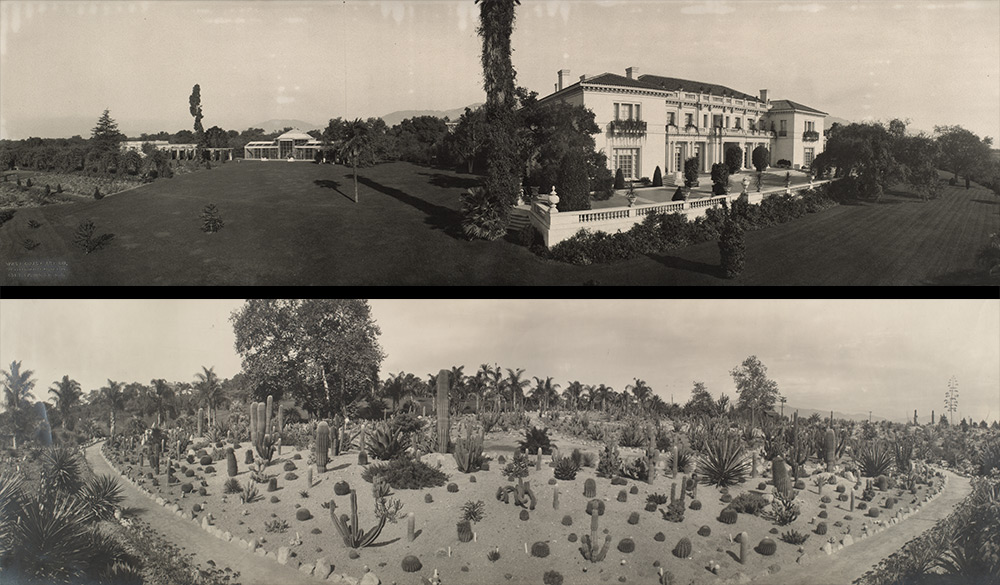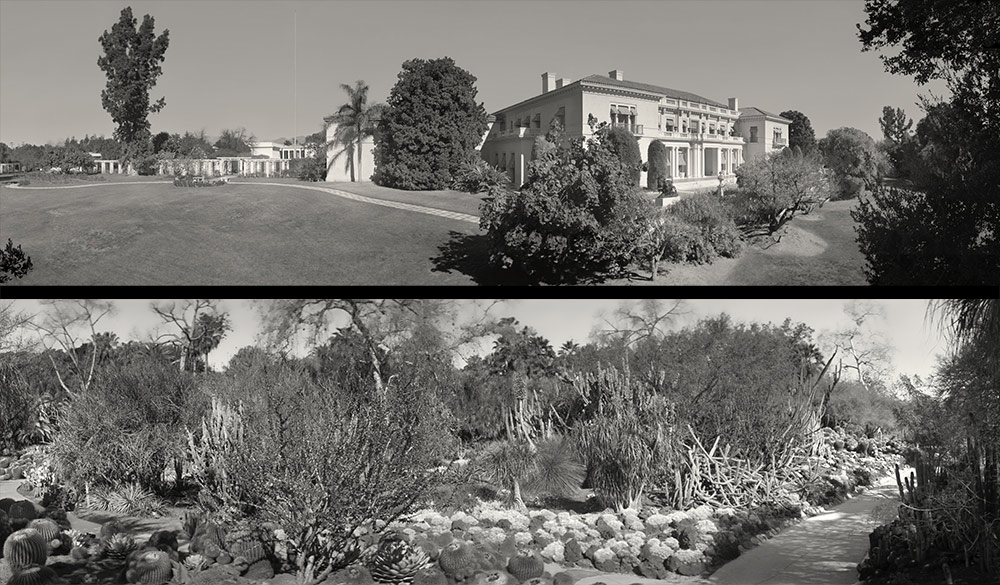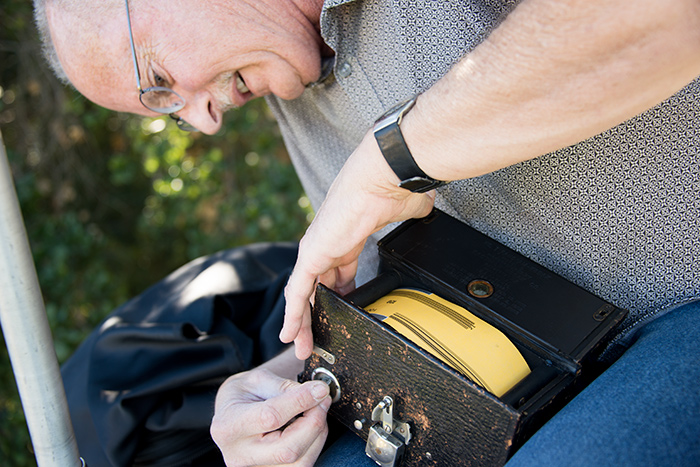Posted on Tue., May 19, 2015 by

During an initial scouting trip, photographer John C. Lewis looked for locations that would most accurately recreate the original composition of panoramic photos made a century before.
What happens when you try to recreate panoramic photos taken on The Huntington’s property a hundred years ago? Earlier this year, award-winning Los Angeles photographer John C. Lewis spent a few days on the grounds to find out. His mission: capture images that approximate two 1915 panoramas from our archives—one of the Huntington mansion (now the Huntington Art Gallery) and the other of the Desert Garden.
The results are on view in the Mapel Orientation Gallery, and the new perspectives are both instantly recognizable and markedly different from the originals. For instance, see the narrow tree on the left that seems to rise out of the Rose Garden trellis in the original photo? It’s a Queensland kauri pine (Agathis robusta) that was already 40 feet tall at the time. In the photograph taken by Lewis, that same tree can be seen towering more than a hundred feet into the air.

Top: Huntington Mansion, West Coast Art Co., ca. 1915. Bottom: Desert Garden, photographer unknown, ca. 1915.
We caught up with Lewis to ask him about his experience.
Q: What sort of camera did you use?
A: It’s a Kodak Panoram, circa 1907, from the same era as the one used a century ago for The Huntington’s photos. It’s a family heirloom from my father. Early in my career, he suggested I try it out, but at the time, I was too enamored of modern cameras. Only later did I start experimenting, and I became enthralled by the camera’s simplicity and the quality of its negatives. Using it feels like a link to the past, and I love the special mood its photographs convey. I now have a body of work devoted to panoramas, and this is the camera I use.
Q: Is making a panoramic photo any different from making other photos?
A: Making a panoramic photo is simply creating a picture with a wide sense of vision. Even though the field of view is greater than the human eye, composing a scene still draws on the same instinct I use for a square or rectangular photograph. It’s just another manner of expression. Technically, there are some differences. Instead of using a viewfinder, I have to turn my head to compose a scene. The camera stays still and the lens swings, pivoting from one side to the other.

Top: Huntington Art Gallery, John C. Lewis, 2015. Bottom: Desert Garden, John C. Lewis, 2015.
Q: What was it like preparing for these shots?
A: It was exciting but challenging—especially to figure out where to set up the camera. I had to estimate distances, angles, and the time of day from copies of the originals. There aren’t any records from the original photographer, so we don’t know if he climbed a tree or used scaffolding. I used a multistory scaffold. That got me pretty close to the original view of the mansion, but in the Desert Garden, the paths had changed and some trees obscured the view.
Q: What kind of film did you use?
A: Back when this vintage camera was made, only low-speed film was available, limiting its use to group photos, site surveys, and such. Fortunately, modern-day 120 mm film—the kind you’d use with a medium-format camera like a Hasselblad—is close to perfect. Today’s variety of film speeds means I can use the camera in many more situations.

Lewis carefully loads his Kodak Panoram camera, circa 1907, with modern-day 120 mm film.
Q: Why did you feel it was important to use a vintage camera?
A: Modern cameras would have made this project a lot easier, but the underlying spirit would have been lost. Using a vintage camera was a very deliberate decision. I didn’t want the clarity, sharpness, and precision of a modern digital camera. I wanted to recreate the scenes through a lens from the past.
Diana W. Thompson is senior writer for the office of communications and marketing at The Huntington.